Magic in Japan: A Traditional Ryokan Stay
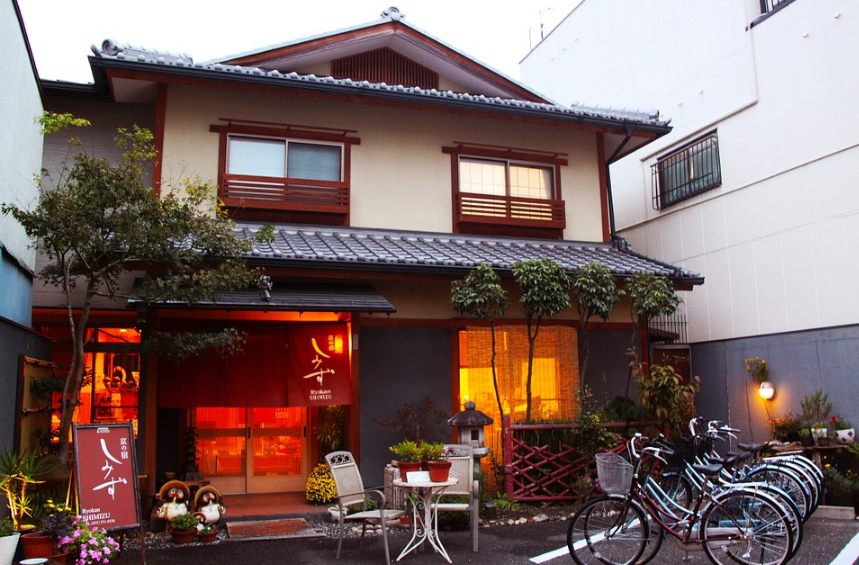
Trip Index:
Introduction
Getting There – JAL First Class
Hotel Review: Ritz-Carlton Tokyo
Guide to Tsukiji Fish Market
Room Service Review: Ritz-Carlton Tokyo
Day in Tokyo
Taking the Shinkansen “Bullet†Train
Hotel Review: Ritz-Carlton Kyoto
Tea at the Ritz-Carlton Kyoto
Day 1 in Kyoto
Day 2 in Kyoto
Room Service Review: Ritz-Carlton Kyoto
Park Hyatt Tokyo: Revisited
Getting to Hiroshima
Hotel Review: Sheraton Hiroshima
Day trip to Miyajima
Day in Hiroshima
St. Regis Osaka
Food Shopping in Japan
One Day in Osaka
Day in Narita
Traditional Ryokan Stay
While I love the excitement of Tokyo and the hotels there (Park Hyatt Tokyo, anyone?) on my list of things I wanted to experience was that of the traditional Ryokan. They are difficult to find right in cities and I wanted to be in a more scenic location to get the feeling of stepping back in time. Luckily, I didn’t have to look far from where my flight would be departing from. Away from the hustle and bustle of Tokyo is Narita, a respectably sized town that receives relatively little fanfare in the shadow of huge Narita International Airport.
A Ryokan is a traditional Japanese Inn heralding back from the Edo period in history when travelers needed a place to stay when moving along Japan’s highways. The friendly inns today typically offer guests a unique experience with tatami mats, sliding doors and interaction with the host/owner.
I stayed at the family-run Kirinoya Ryokan in Narita for a night, which was a treat. The photos I took were a bit poor which I apologize for in advance but hopefully you’ll get the gist. I took the JR railway line to get to the nearest station and the ryokan owner picked me up and took me to my accommodations for the evening. I was greeted warmly, and even though my Japanese is pretty much nonexistent and the proprietor didn’t speak great English we got on just fine.
Once at the ryokan there was no need for a taxi or transport since there was plenty of sightseeing within easy walking distance.
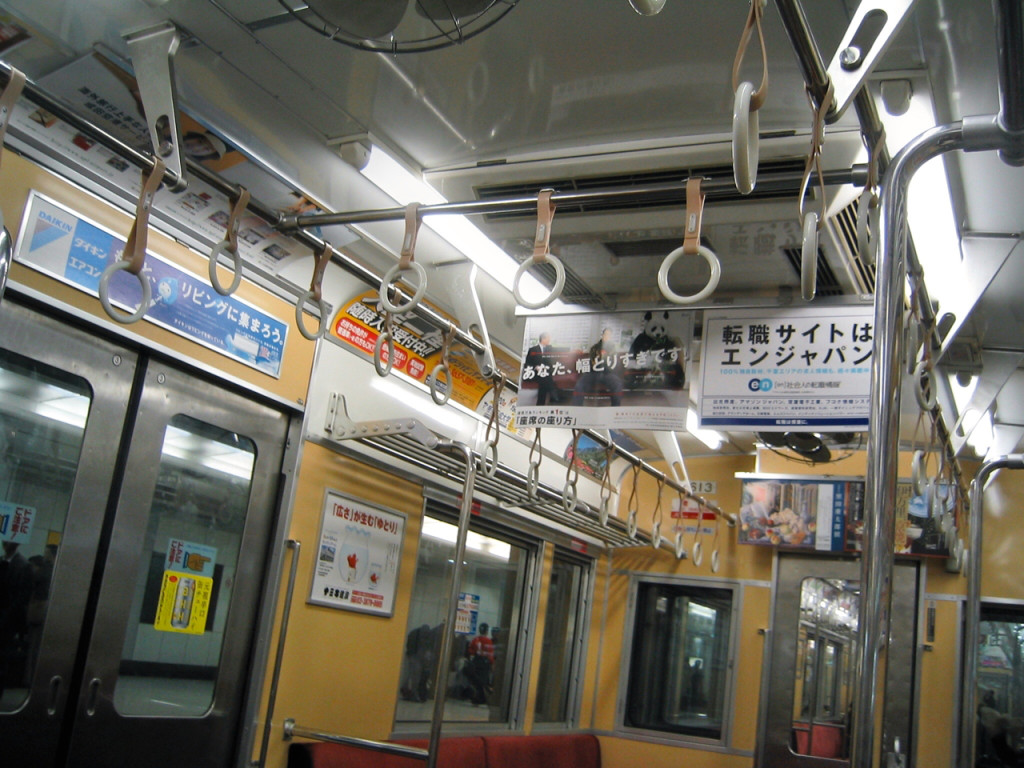
My room for the night was large, and actually consisted of two rooms that could be separated by sliding shoji screens.
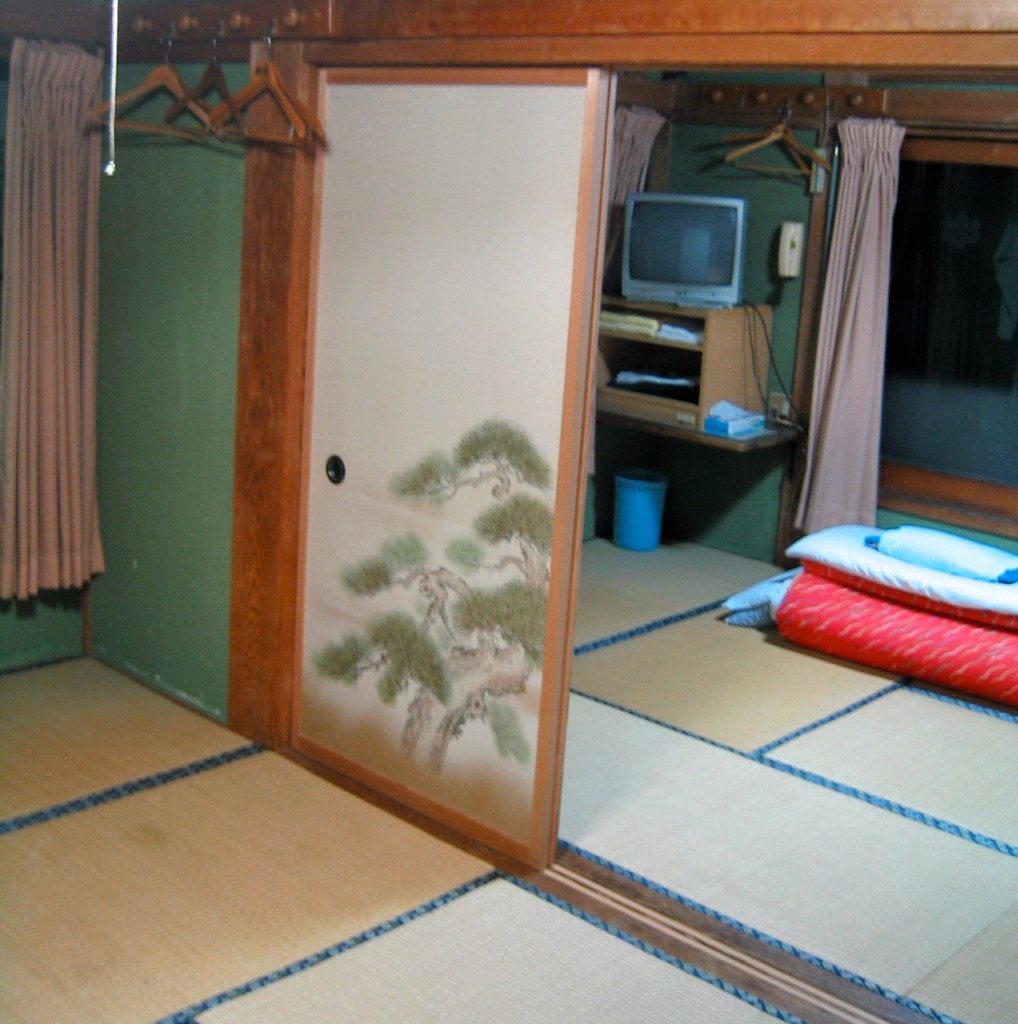
The delicate screens were painted in greens in browns with scenes of nature, and there was a traditional stepped bureau that reminded me of the one in my Neko Atsume game.
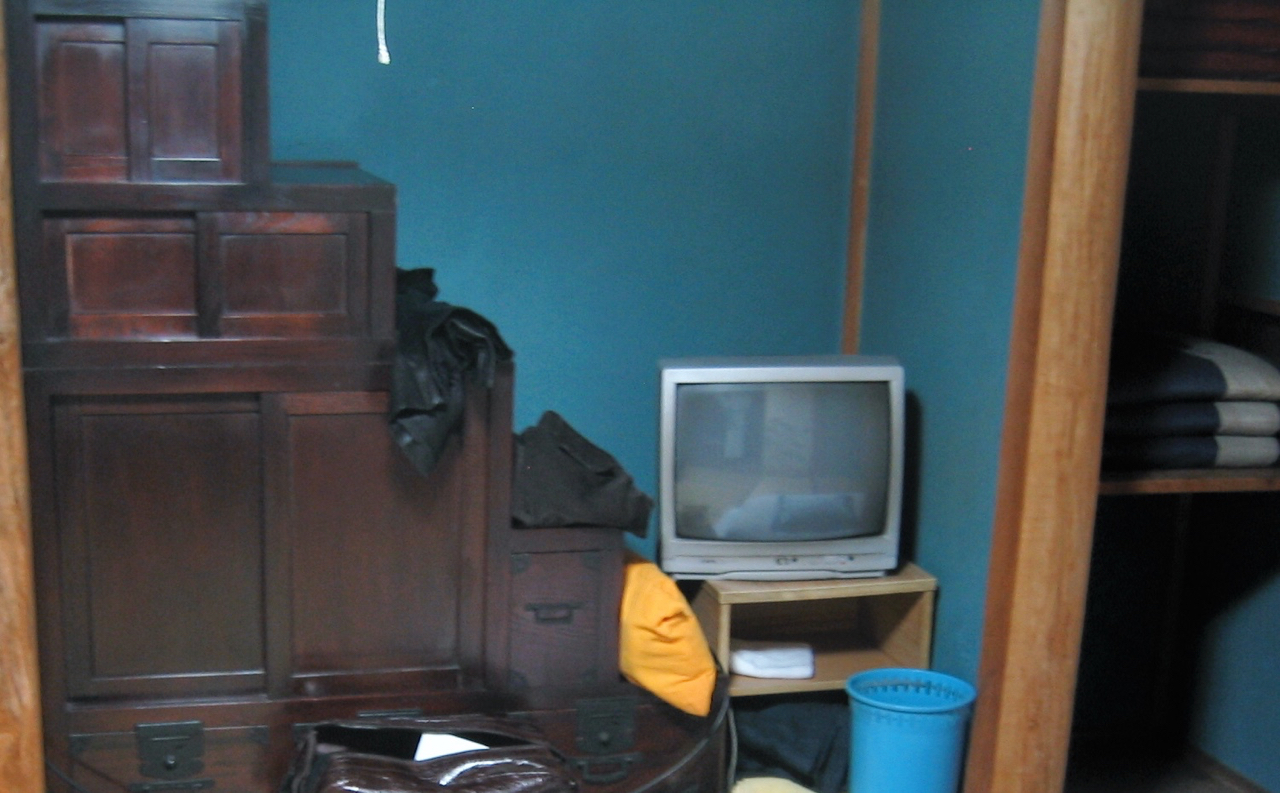
A thermos of piping hot water for green tea and some rice crackers had thoughtfully been laid out for my arrival.
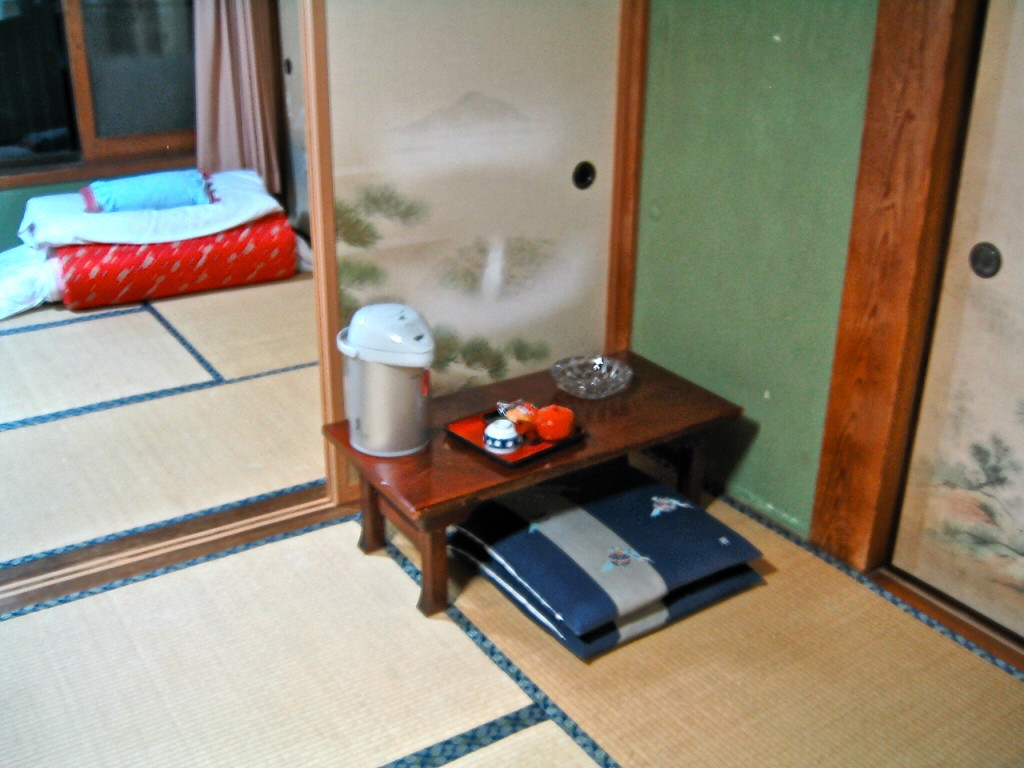
Traditional tatami mats lined the floors, and I took my shoes off before entering. I don’t wear shoes in my own home so that part wasn’t much of a departure from the norm for me, but I enjoyed not hearing any guests clomp around in heavy shoes. The practice also gave the place a more homey feel. There were slippers available, as well as slip-on shoes for the bathroom, and geta for walking around outside.
In my room I found a yukata laid out which is sort of like a bathrobe to wear while around the ryokan. It can be worn during dinner, breakfast, on the way to the bath, and while sleeping (though I only wore mine in public areas). My yukata came with robe and obi (the belt). I remember being careful to fold it with the left side over the right, though I didn’t recall why it was important to do so. Do any readers know? Here’s a link with easy instructions on how to put on your yukata.
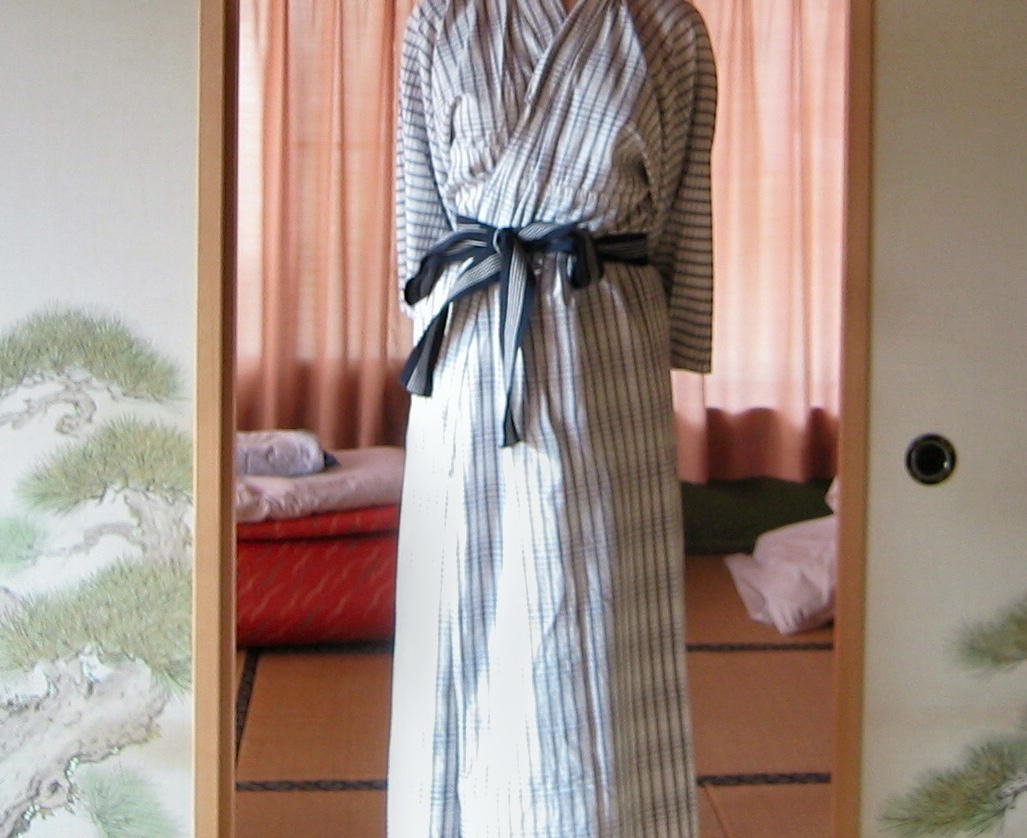
The bathrooms were shared, which is a downside that unfortunately may turn some readers off. The ryokan wasn’t full when I was there though and the owner or his wife had even drawn me a hot bath that was ready when I arrived. Long wooden planks had been laid over the top of the tub, to keep it hot. After the bath I changed into the yukata and went out into the main room.
I was welcome to walk anywhere around the ryokan, and the owner was on hand to provide details about the old water well display as well as the decorative Samurai swords and armor that lined the walls. Here’s a screenshot from Kirinoya’s website –
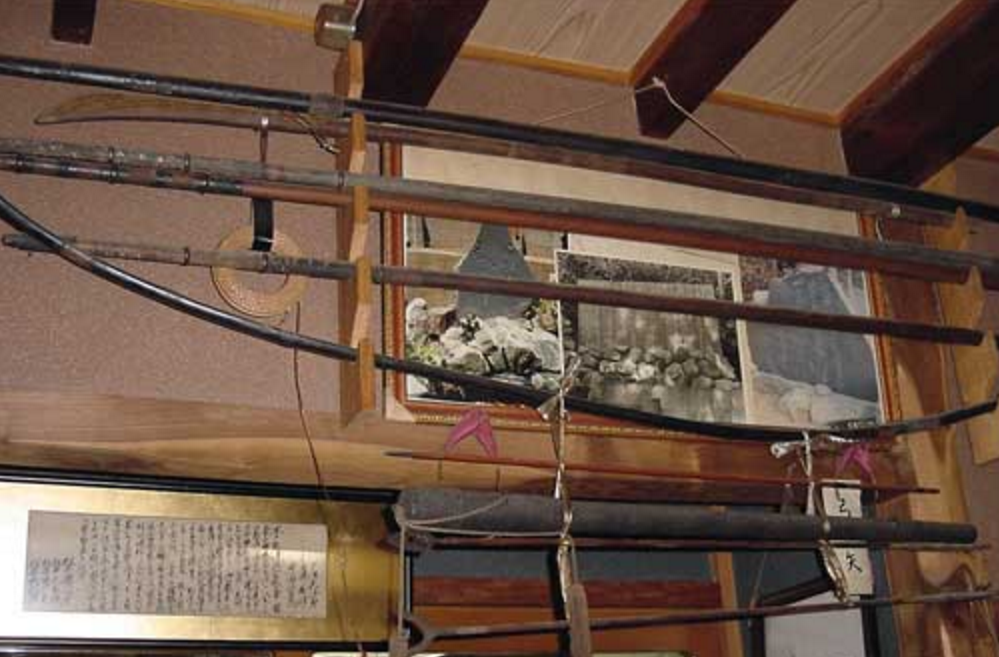
There were a few other guests just finishing up dinner and drinks when I arrived, and they were glad to meet another guest. Everyone sat around in their yukata discussing temples and restaurants, and the owner and his wife were more than happy to add in helpful tips. The conversation was flocked with humor and laughs, and everyone retired to their rooms about the same time. Some ryokan serve meals to guests privately in their rooms, but I very much enjoyed the communal meal.
When I went back to the room I found that the futon had been unfolded for me, and the bed was ready. Sleeping so near the floor on something other than a regular bed might make a couple readers cringe, but when it was time to sleep I found that the thick futon mattress was actually quite comfortable and the air smelled fresh and woodsy. The pillows were buckwheat which was unfamiliar to me but I slept quite well on them anyhow.
In the morning a delicious traditional Japanese breakfast was prepared for me, and I was offered Western style items as well but I declined them since I wanted to take in the whole experience. I had been asked upon my arrival what time I wanted to eat at so it would be ready for me in the morning. The egg dish was slightly sweet, and each tiny container held just enough. There was a miso soup, crunchy sliced daikon radish, rice, fish, and other little tasty kaiseki (seasonal and regional specialties).
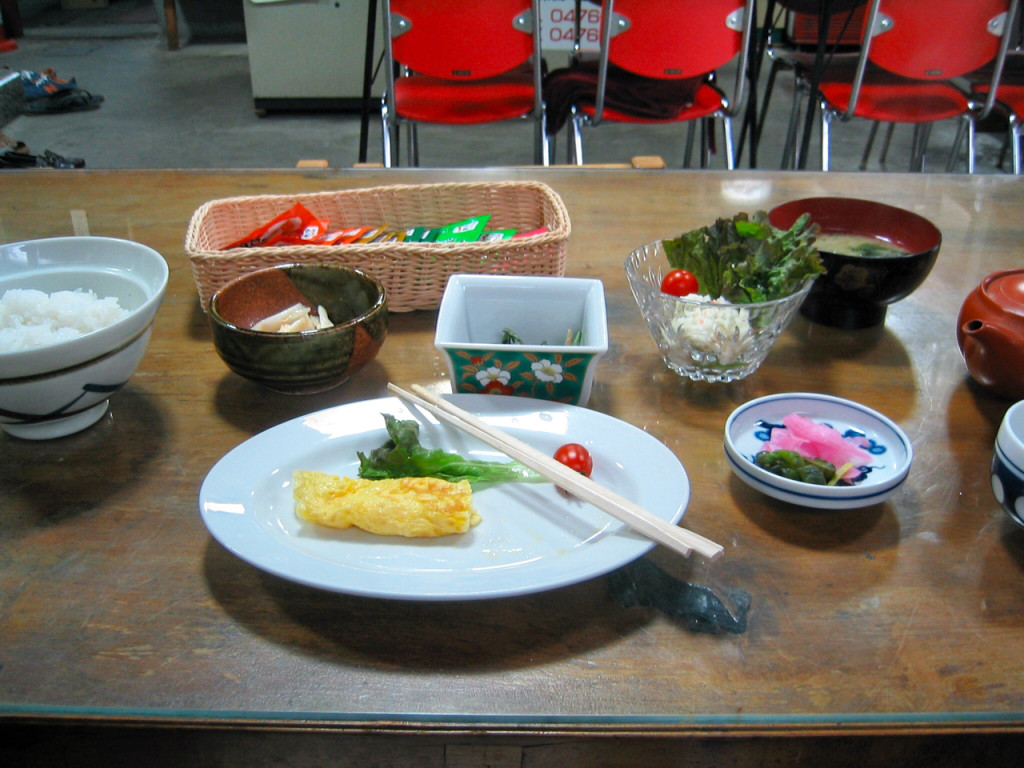
After breakfast the owner took me back to the rail station so I could catch my flight. I was thrilled at my stay at this ryokan. Because of the proximity to the airport it didn’t require an extra trip to get to, and the town of Narita had its own charm. The owner of the ryokan and his wife were friendly and kind, and I’d recommend this property to anyone looking for a traditional experience.
Even if were are a first time visitor to Japan or one with just a loong layover you could easily get from the airport to the ryokan, explore the town, spend the night and get back to the airport with minimal effort.
Have you stayed at a ryokan before, and if not does the shared bathroom make you less likely to want to try it out?

We stayed at one in Hakkone (? spelling). It was a lot more nature and solitude. Also a traditional 12 or so course meal that was similar to the ceremonial meals monks eat. Little resemblance to this one near the airport….sorry to say but I think you need to search out a more legit experience
@Mark R and @lopere wow it seems as though I may have picked the Motel 8 of the ryokan world. With no previous ryokan stays to compare it to, I didn’t like the fact that the owner smoked but just chalked up the rest of the experience to being “traditional”.
I can see I’ll need to stay at another ryokan to compare, and write about that stay. A 12 course meal? Sounds delightful!
I’ve stayed in around 100 over the years and that is BY FAR the most ratty “ryokan” I’ve ever seen.
That’s the equivalent of a pay by the hour hotel on a seedy strip in any major city.
@lopere I found it to be quaint with such warm and friendly hosts, but now I am curious to try another ryokan to compare!
I would have to agree with lopere, Melinda — but only to a point.
I stayed at a ryokan in the Asakusa area of Tokyo; and I recall it being much nicer than what I saw in your photographs — and the room rate per night was not what I considered expensive at all. I cannot remember the name of the ryokan where I stayed; but it was years ago. If I find the photographs, I may post them — but it would have to be a “retro” trip report and not a current one.
Then again, I stayed at a hanok in Seoul, which reminded me of a ryokan — and your photographs reminded me of my stay there, which I would recommend:
http://thegate.boardingarea.com/review-of-an-authentic-hanok-in-seoul-yoos-family-guest-house-byeolhadang/
If there were better hanoks at which I could have stayed in South Korea, I would not know — but I was satisfied with my stay.
I think you put that very well, @Brian Cohan. I was indeed satisfied with my stay at this ryokan, and next time I’d try a different one to get a new experience.
The reason for the left-over-right fold is symbolic. Folding it over the other way is how the Japanese usually dress the dead.
@Gerard thanks for clearing that up! Goodness I can see why it is important to get it right and glad I did it correctly.